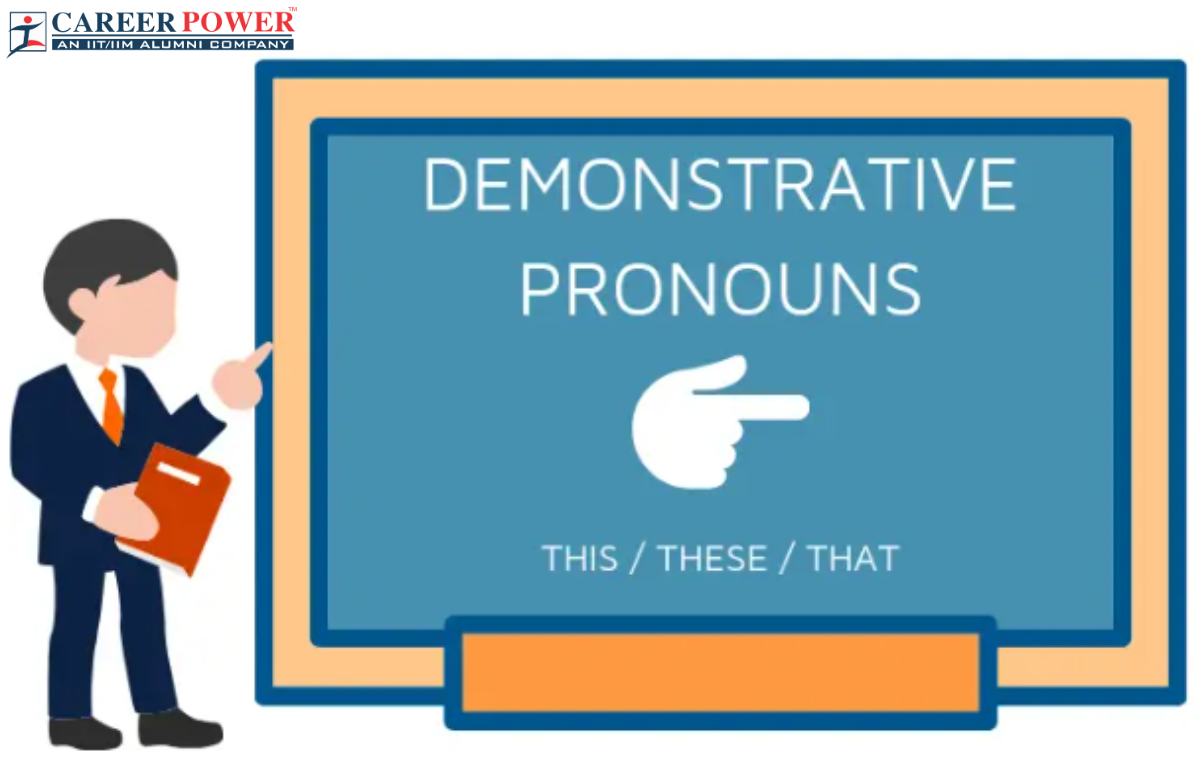Demonstrative Pronouns: In English Grammar, pronouns are generally words that are used in place of a noun. Demonstrative pronouns are those that are used to point out something more specific in a sentence. Demonstrative pronouns can be either singular or plural and represent nouns that act as subjects or objects in a sentence. In this article, we have provided a detailed explanation of Demonstrative pronouns their meaning, rules and examples.
Demonstrative Pronouns Meaning
The Demonstrative pronoun is a pronoun that is used instead of a noun that points out something or someone specific in a sentence. The demonstrative pronoun is derived from the word ‘Demo’ which means to identify, explain, or indicate something to someone. Usage of these pronouns draws attention to the person or thing you are referring to. This can make your communication more efficient as you need not repeat the nouns more often. For example, this, that, these, those are some of the demonstrative pronouns used in English Grammar.
Demonstrative Pronouns Definition
According to the Cambridge Dictionary, demonstrative pronouns are those words such as this, that, these, and those which can be used specifically to indicate a noun in the sentence which is been referred to. According to the Merriam-Webster Dictionary, a word that denotes or points out the one which was already referred to distinguish from others of the same class.
| Demonstrative pronouns Examples | ||
| Near | Far | |
| Singular | This | That |
| Plural | These | Those |
Demonstrative Pronouns -Rules and Examples
Demonstrative pronouns are used to identify a specific person, thing, animal or place. Demonstrative pronouns act as substitute or replacement words for the repetitive nouns in sentences. They in fact make communication easier and more clear. These pronouns can be singular or plural and the corresponding verbs adjacent to the pronouns are to be used clearly. The rules and examples of demonstrative pronouns are tabularized below.
| Demonstrative Pronouns – Rules and Examples | |||
| Demonstrative Pronouns | Uses | Examples | |
| Singular | This | Refers to a particular person, place, animal or thing that is closer in time and distance. |
|
| That | Refers to a particular person, place, animal or thing that is further away in time and distance. |
|
|
| Plural | These | Refers to a number of people, places, animals or things that are closer in time and distance. |
|
| Those | Refers to a number of people, places, animals or things that are further away in time and distance. |
|
|
Uses of Demonstrative Pronoun
Demonstrative Pronouns are used to point to specific items or groups of items. They indicate whether something is near or far in distance or time from the speaker or writer. Here are the main uses:
- Pointing out Specific Things:
- This [Singular] and these [Plular] refer to things that are close to the speaker.
- That [singular] and those [Plural] refer to things that are farther away from the speaker.
- Example: “This book is interesting.”
- Referring to things mentioned before:
- The demonstrative pronoun can refer back to something mentioned earlier in the discourse.
- Example: “I like this idea. That’s why I support it.”
- Pointing Out in Time:
- Demonstrative pronouns can also refer to time, indicating whether something is near or far in time from the current moment.
- Example: “This week has been busy.”
- Emphasizing or Contrasting:
- Demonstrative pronouns can be used for emphasis or to contrast different items.
Demonstrative Pronouns – Exercises
Rewrite the following sentences using appropriate demonstrative pronouns:
1. Sarah is my nephew.
2. I prefer apples to oranges.
3. Those flowers look beautiful.
4. Be careful. That slope is very dangerous.
5. Did you find the dogs in there?
Check Your Answers now:
1. This is my nephew.
2. I prefer apples to these.
3. Those Flowers look beautiful.
4. Be careful. That is very dangerous.
5. Did you find those in there?



 Independence Day Speech in English, 15 A...
Independence Day Speech in English, 15 A...
 50+ Rhyming Words in English List, Check...
50+ Rhyming Words in English List, Check...
 Essay Writing Format for Students in Eng...
Essay Writing Format for Students in Eng...













